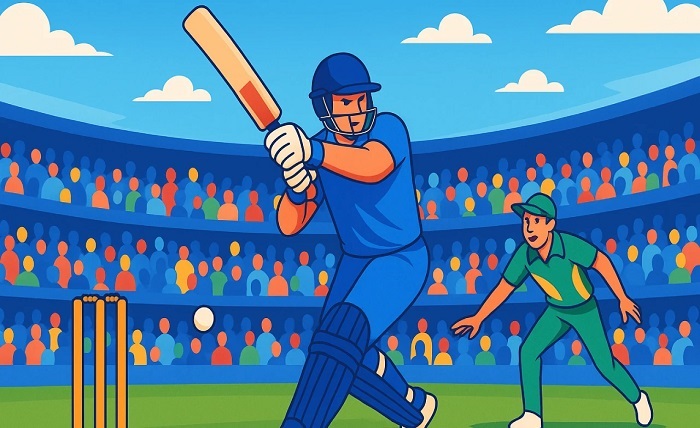Big matches deserve a stream that opens fast and holds steady from anthem to handshake. The problems are predictable: copycat pages asking for a “codec,” auto quality bouncing at the worst moment, and a phone that runs hot right when the chase turns sharp. A calmer plan fixes those with a few habits set before the toss. Pick one trustworthy source, prepare the phone once, and treat data, delay, and battery as dials you set rather than knobs you spin when the bowler starts the run-up. This guide keeps the focus on what actually works – a clean way to choose where to watch, device hygiene that prevents stalls, picture settings that match real bandwidth, and a match-night routine you can run half-asleep after a long day. Do it once, repeat it all season, and attention returns to timing, angles, and field craft.
Choose a source that behaves like a real service
Source choice drives delay, stability, and how fast help arrives if something breaks during a tight finish. Start by reading the address bar slowly and closing any tab that pushes add-ons, asks for contacts or SMS, or hides who runs the site. A sound stream loads over https, labels live vs upcoming in plain language, and offers support that opens without detours. While sketching fixtures and alerts, it helps to preview how listings are organized at desi play, then return to the provider you actually trust and confirm the exact domain before first ball. Treat that preview as a map, not a promise. Set two alerts – one 24 hours before for updates and downloads, one 20 minutes before to open the app and test audio – so the first tap happens without rush and mirrors never tempt a last-minute detour.
Device setup that protects battery, data, and privacy
Good viewing starts with a tidy phone. Keep one browser or app profile used only for streams – logged into nothing, pop-ups off, site notifications off – so tracking drops and crashes stay rare. Update the player earlier in the day rather than at the toss; forced patches during powerplay overs ruin nights. On install, deny anything off-topic for video or payments; a streaming or odds app needs network, media, and basic notifications, not your address book. First run should happen on Wi-Fi to cache codecs without burning mobile data. If the app stores card details, lock it behind the screen lock and biometrics. Keep the last stable build in a labeled folder to roll back if a fresh release misbehaves during a knockout – boring, yes, and a lifesaver when the tower is crowded and patience is thin.
Picture, delay, and audio – set once and stop fiddling
Specs on a box mean little on a busy cell. Match quality to the link you actually have, then leave it alone. On mobile data, 480p or 720p hits the sweet spot for clarity, heat, and battery; at home on strong Wi-Fi, step up once and stop tweaking. If “auto” keeps bouncing, turn it off – a stable mid-tier feed beats a stuttering HD that burns data and nerves. Expect about 0.8–1.5 GB per hour at 720p and 2–3 GB at 1080p depending on frame rate, so add a monthly data warning before a doubleheader eats the plan. Keep brightness steady to limit heat and throttling through long spells. Wired earbuds, or low-latency Bluetooth, keep commentary in step with bat-on-ball and reduce power draw. If the player offers a low-latency toggle, test it on a quiet day and pick the fastest stable setting; razor-thin buffers feel quick until a tower hiccup turns them into drops.
A pre-match checklist you can run in two minutes
Strong nights start with a short, repeatable pass that blocks junk and keeps focus on the game instead of fixes. Open the stream from the brand’s main domain and confirm the padlock. Kill site notifications and clear the recent-apps list so your player owns the lane. Close other video apps and cap background refresh to stop chat and cloud sync from stealing bandwidth when the ball is live. If the app keeps payment data, verify the lock screen and biometrics are active. Finally, set a quiet place and a stable power source so the phone stays cool – the difference between a steady innings and a twitchy one often comes down to heat and power, not magic settings that promise more than physics allows.
- Lock resolution for the venue – mid on mobile data, higher at home – and avoid changes mid-over.
- Deny off-topic permissions at install – no contacts, no SMS, no device-admin rights.
- Update hours before play; skip patches during the match.
- Sit near the router or use Ethernet for TV sessions to cut jitter.
- Keep one payment method on file and remove expired cards to avoid last-minute failures.
Finish strong and start faster next time
Closing well is part of the plan. End the stream from inside the app, clear recent apps, and jot the recipe that worked – device model, player version, network, and quality – so the next fixture opens without guesswork. Review app permissions monthly and strip anything that does not serve video, login, or payments. Keep the two-alert habit so updates happen with time to spare and the sound check happens before the toss. When the group watches together, use the same platform where possible and re-align at the first ad break with a short pause-and-play count; mute score push alerts until the last ball since they tend to land a few beats ahead of video. With source checks set, device hygiene handled, and settings locked, tech fades into the background and the match takes center stage – clear picture, calm pace, and a room that reacts in the same second when a yorker kisses middle and the ground rises as one.
